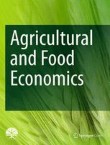Coping with food and nutrition insecurity in Zimbabwe: does household head gender matter?
On the basis of a large-scale nationally representative sample of household data from five pooled cross-section surveys conducted by the Zimbabwe Vulnerability Assessment Committee (ZimVAC), this study assesse...
